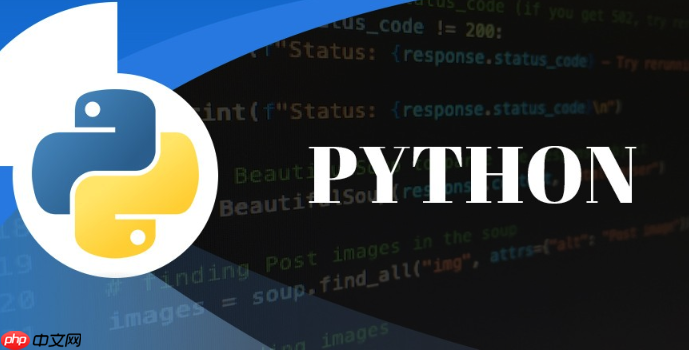多线程间通信推荐使用 queue.Queue,因其线程安全且支持阻塞操作,生产者线程 put 数据,消费者线程 get 数据,通过队列实现类似管道的数据传递,避免共享内存导致的竞争问题。

Python 中的多线程本身运行在同一个进程内,线程之间共享内存空间,因此不需要像进程间通信(IPC)那样使用复杂的管道机制。但如果你指的是“如何在多线程中模拟管道通信”或“如何安全地在线程间传递数据”,可以使用 queue.Queue 来实现类似管道的行为。
queue.Queue 是 Python 线程安全的队列实现,非常适合用于多线程之间的数据传递,行为类似于管道(pipe)。
基本思路是:一个线程作为生产者,往队列中 put 数据;另一个线程作为消费者,从队列中 get 数据。
示例代码:
立即学习“Python免费学习笔记(深入)”;
import threading
import queue
import time
def producer(q):
for i in range(5):
print(f"生产者: 生成数据 {i}")
q.put(i)
time.sleep(1)
q.put(None) # 发送结束信号
def consumer(q):
while True:
item = q.get()
if item is None:
break
print(f"消费者: 接收到数据 {item}")
q.task_done()
# 创建线程安全队列
q = queue.Queue()
# 创建并启动线程
t1 = threading.Thread(target=producer, args=(q,))
t2 = threading.Thread(target=consumer, args=(q,))
t1.start()
t2.start()
t1.join()
t2.join()
print("通信完成")os.pipe() 主要用于父子进程之间的通信,不适用于线程。线程共享地址空间,使用队列更高效、更安全。
在多线程场景下,推荐使用 queue 模块提供的三种队列:
如果你实际想问的是“多进程”间的管道通信,Python 提供了 multiprocessing.Pipe:
```python from multiprocessing import Process, Pipedef sender(conn): conn.send('Hello from child') conn.close()
def receiver(conn): msg = conn.recv() print(f"收到: {msg}") conn.close()
parent_conn, child_conn = Pipe() p1 = Process(target=sender, args=(child_conn,)) p2 = Process(target=receiver, args=(parent_conn,))
p1.start() p2.start() p1.join() p2.join()
<p>总结:多线程通信用 <strong>queue.Queue</strong> 最合适,它线程安全、使用简单、支持阻塞操作。而 Pipe 更适合进程间通信。根据实际场景选择合适的工具即可。</p> <p>基本上就这些,不复杂但容易忽略线程安全问题。用好 Queue,能避免大多数并发问题。</p>
以上就是Python多线程如何实现管道通信 Python多线程进程间通信方法的详细内容,更多请关注php中文网其它相关文章!

每个人都需要一台速度更快、更稳定的 PC。随着时间的推移,垃圾文件、旧注册表数据和不必要的后台进程会占用资源并降低性能。幸运的是,许多工具可以让 Windows 保持平稳运行。

Copyright 2014-2025 https://www.php.cn/ All Rights Reserved | php.cn | 湘ICP备2023035733号